Lettuce Garden Tips: Grow Fresh, Crunchy Greens at Home
Growing your own lettuce can be a fulfilling experience, offering fresh greens right at your fingertips. Whether you have a large garden plot or just a small container, lettuce is a versatile and easy-to-grow vegetable.
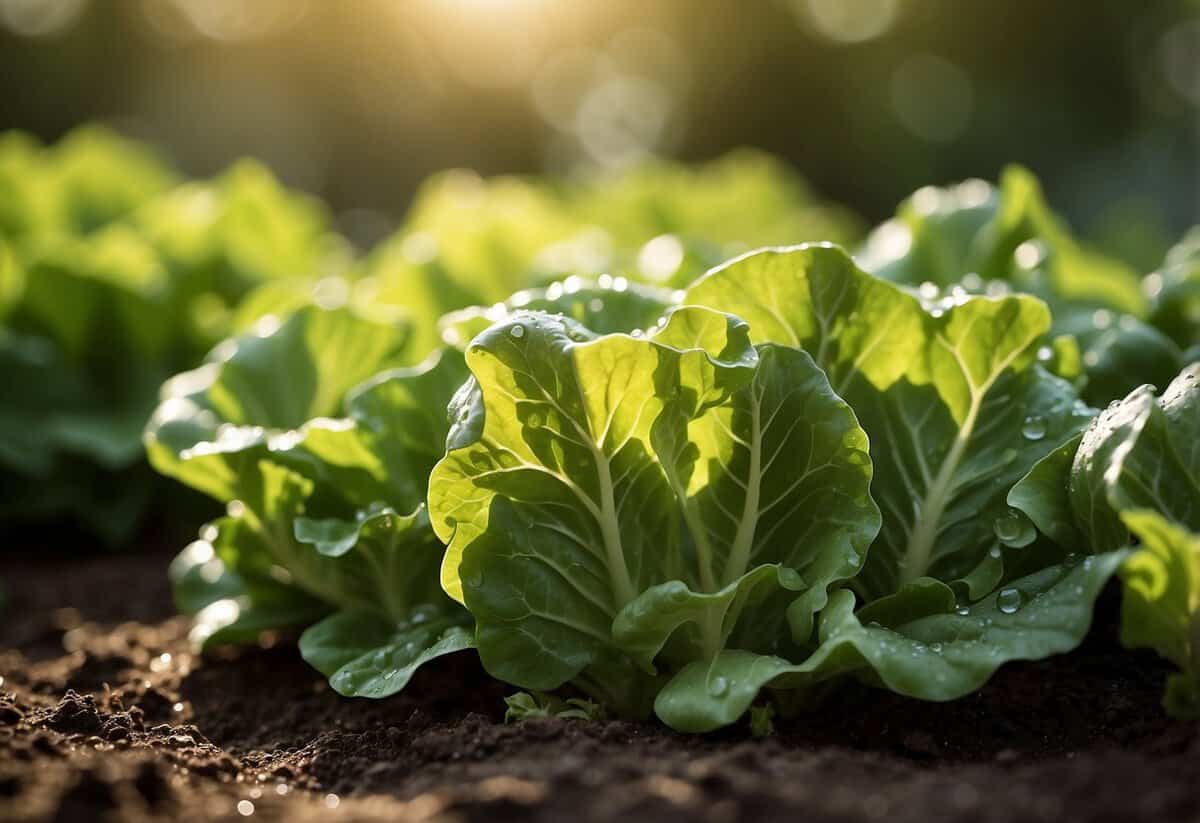
What are the best tips to help your lettuce thrive? From planting to harvesting, there are several key steps to ensure a bountiful harvest. With a bit of guidance, you can enjoy crisp, homegrown lettuce throughout the growing season.
1) Choose the Right Lettuce Variety

When picking lettuce for your garden, think about your climate. Some types thrive in cool weather, while others tolerate heat. For cooler regions, leaf lettuces are a great choice.
Romaine lettuce grows well in most climates and offers a mild, sweet flavor. It’s perfect for salads and sandwiches.
Try butterhead varieties for their soft, tender leaves. They have a slightly sweet taste and add a nice touch to any salad.
Explore different types and experiment with a few to find your favorites. Different lettuces can give you a range of textures and flavors for your meals.
2) Start with Healthy Soil
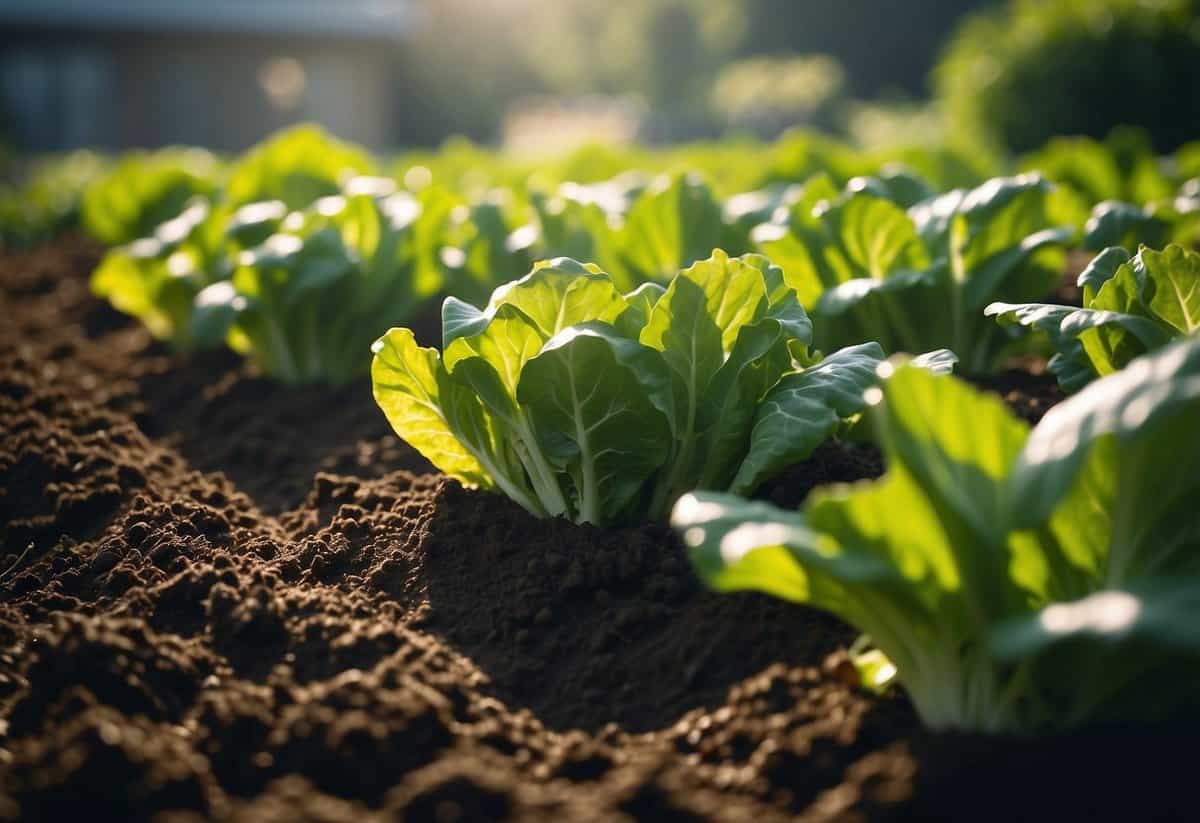
Your lettuce needs soil that is rich in organic matter like compost or well-rotted manure. This helps the plants grow strong and healthy.
Make sure the soil drains well. Lettuce doesn’t like soggy roots. Adding organic matter can improve drainage.
Aim for a pH level between 6.0 and 7.0. This slightly acidic to neutral range is ideal for lettuce growth.
3) Plant at the Right Time

Lettuce grows best in cooler temperatures. Aim to plant your seeds in early spring or late summer. This ensures that the plants do not bolt, which makes the leaves bitter.
Keep an eye on the weather. Lettuce thrives when temperatures are between 50°F and 70°F. Warm weather can cause your plants to go to seed too quickly.
4) Water Consistently
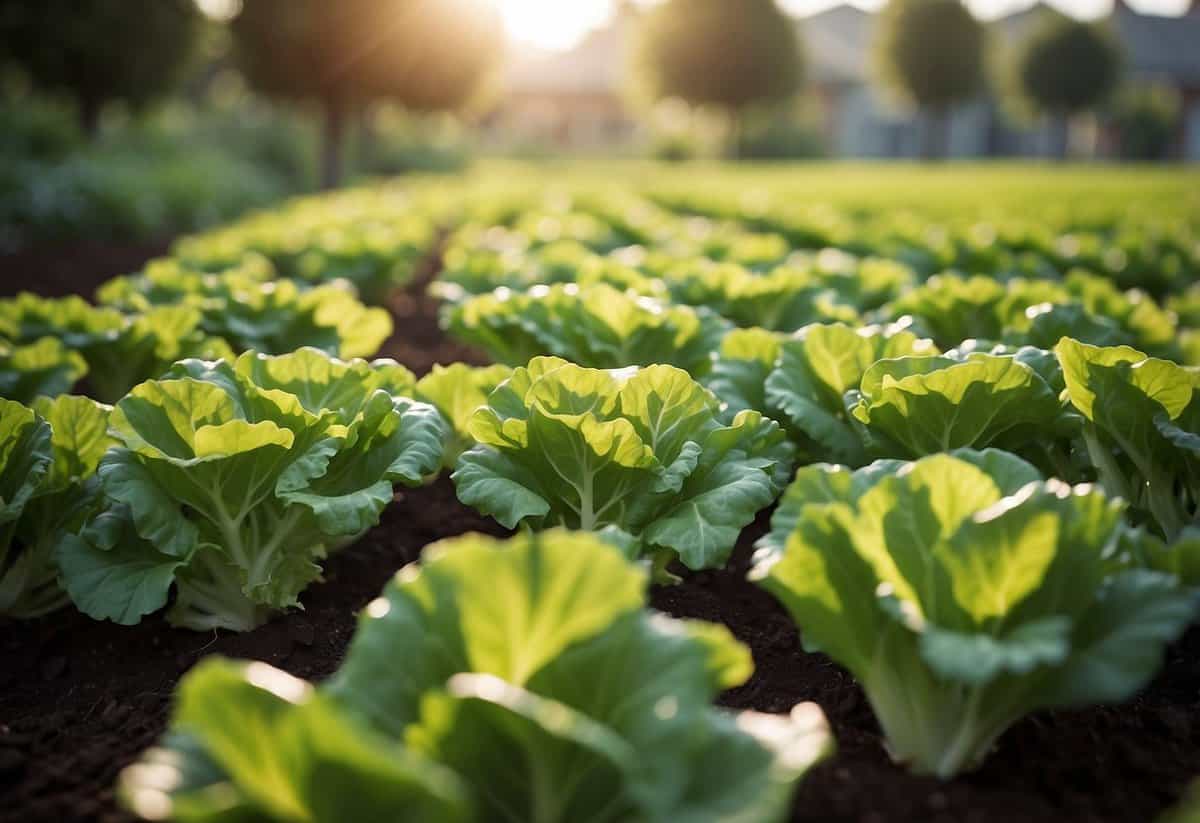
Consistent watering is crucial for growing healthy lettuce. Lettuce has shallow roots, which means it needs regular moisture.
Check the soil moisture often. Stick your finger into the soil up to the first knuckle. If it feels dry, water the lettuce.
Avoid letting your lettuce dry out too much, as it can cause bolting and make the leaves taste bitter. For more tips on watering frequency, visit this guide.
A soil high in organic matter helps retain water. Even so, you still need to water regularly, as you can learn here.
5) Provide Adequate Sunlight
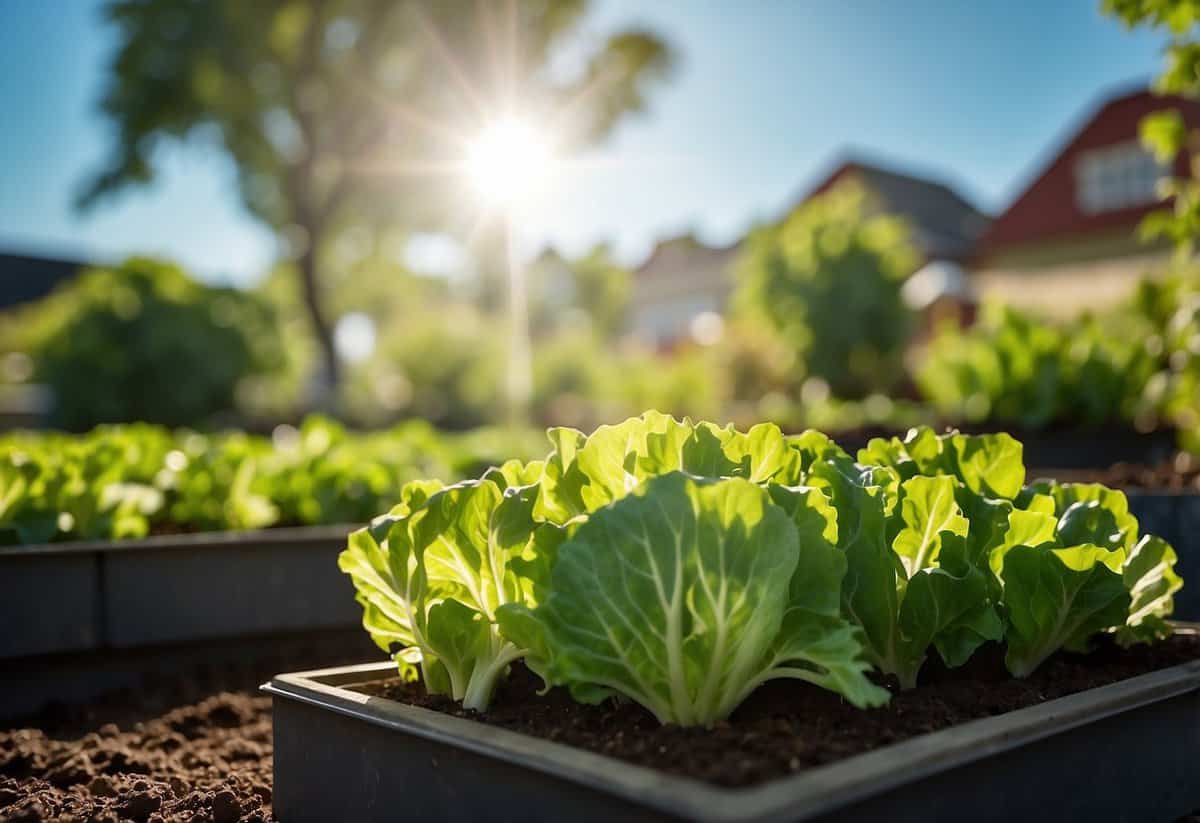
Lettuce needs the right amount of sunlight to grow well. Ideally, you should give your lettuce plants 6 to 8 hours of direct sunlight daily. This ensures they get enough energy to thrive.
Be careful in hotter climates. Too much sun can cause lettuce to bolt, making the leaves bitter. If it’s too sunny, consider providing some afternoon shade.
Placing your lettuce in a spot with full sun in the morning and light shade in the afternoon can give them the best of both worlds.
6) Control Pests Naturally
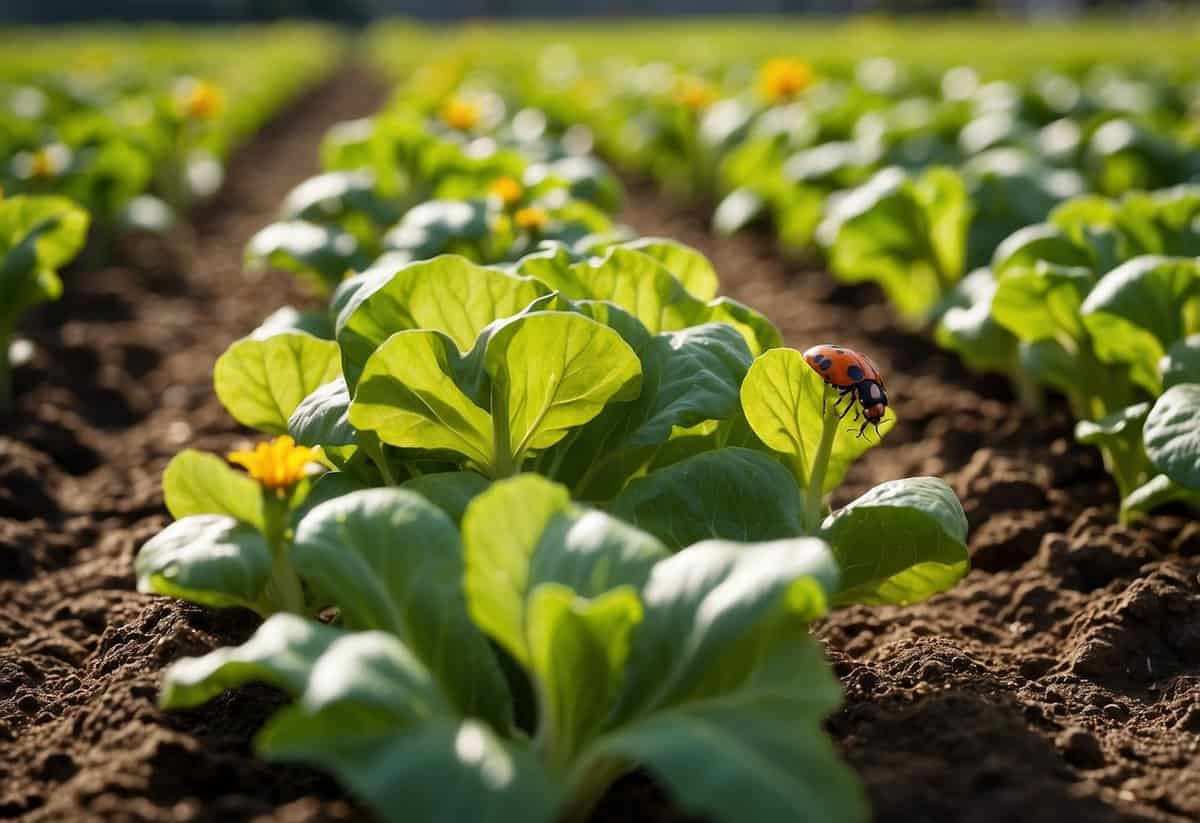
You can protect your lettuce without chemicals. Use natural sprays like garlic or neem oil. These are safe for your plants and the environment.
Introduce beneficial nematodes to the soil to control pests like grubs. Also, companion planting with herbs like basil can help repel insects.
Remember to inspect your lettuce regularly. Remove any affected leaves to prevent pests from spreading.
7) Thin Out Seedlings

Thinning your lettuce seedlings is important for healthy growth. Without enough space, your plants will compete for light, water, and nutrients.
You should start thinning when your seedlings are about 2-3 inches tall. Aim to have each lettuce plant about 12 inches apart.
You can thin the seedlings in stages to reduce shock. First, thin them every 6 inches, then thin again to achieve the final spacing.
Thinning fixes overcrowded areas and helps the remaining plants grow stronger and healthier. For more detailed steps on thinning, check out this guide on how to thin lettuce seedlings.
8) Mulch to Retain Moisture

Using mulch in your lettuce garden is a great way to keep the soil moist. Mulch helps reduce evaporation, meaning you won’t have to water as often.
Aim for a mulch layer of about 2 to 4 inches. This thickness prevents water loss but still allows rain to reach the soil.
Consider using materials like straw or coco fiber. These options not only retain moisture but also help keep weeds at bay.
9) Harvest at the Right Time

To keep your lettuce healthy, it’s important to pick it at the right moment.
For loose-leaf varieties, you can start harvesting when the leaves are 3 to 4 inches long.
If you’re growing head lettuce, wait until the heads are firm. This is usually around 60 to 70 days after planting.
Don’t forget to use clean scissors or your hands to gently harvest. Happy gardening!
10) Rotate Crops Annually

Rotating crops in your lettuce garden helps prevent soil diseases and pests. By planting lettuce in a different spot each year, you limit pests and diseases from building up in the soil. This keeps your plants healthier.
Crop rotation also helps balance soil nutrients. Different plants use different nutrients, so rotating them can improve soil fertility.
Try grouping crops by type. For example, alternate lettuce with root crops like carrots or fruiting crops like tomatoes. This method, known as crop rotation, is simple and effective. For more tips, check out this guide on crop rotation in vegetable gardens.
Preparing Your Garden

To grow healthy and abundant lettuce, it’s crucial to choose the right location and prepare the soil properly. This ensures that your lettuce will have the best conditions to thrive.
Choosing the Right Location
Lettuce needs a spot in your garden that gets plenty of sunlight. Aim for an area that receives at least 5-6 hours of sun each day. When temperatures rise, afternoon shade can help prevent your plants from bolting.
Avoid low spots in your garden where water might accumulate, as lettuce thrives in well-drained areas. Consider using raised beds or containers to improve drainage and control soil conditions better.
If you are limited on space, growing lettuce in pots or tubs filled with good-quality potting soil is a great option. This way, you can move the containers to catch the sunlight or shield them from the intense afternoon heat.
Soil Preparation
Start by using loose, well-draining soil. Lettuce roots need access to air and water, so avoid compacted soil. Amend your garden soil with plenty of compost or organic matter. This improves soil structure and provides vital nutrients.
The ideal soil pH for lettuce is between 6.0 and 7.0. You can test your soil using a simple pH kit. If needed, adjust the pH by adding lime to increase it or sulfur to decrease it.
Watering is key for lettuce. Keep the soil evenly moist, not soggy. A deep watering once a week often works well. Mulch around your plants to conserve moisture and keep the soil temperature consistent.
Following these steps will help your lettuce grow strong and healthy, providing you with delicious fresh greens throughout the season.
Planting Lettuce

Planting lettuce involves choosing the right time to plant and taking proper care of seedlings for a successful garden. It’s important to follow key steps for optimal growth and a bountiful harvest.
Ideal Planting Times
To get a head start, sow lettuce seeds indoors 4 to 6 weeks before the average last frost of spring. If you’re sowing directly outdoors, do this about 4 weeks before the last frost, when the soil temperature is at least 35°F (1.7°C).
Lettuce thrives in cooler weather, so early spring and fall are ideal. For continuous harvests, plant seeds every two weeks. As summer approaches, choose a partially shaded spot to prevent the plants from bolting.
Seedling Care
After germination, make sure to keep seedlings evenly moist. Once they are about 4 inches tall, transplant them outdoors. Space them according to the variety: leaf types 4 inches apart, head types 12 inches apart, and romaine 6 to 8 inches apart.
Use compost to enrich the soil and improve moisture retention. Mulch around the plants to keep the roots cool and discourage weeds. Water thoroughly but avoid waterlogging the soil to prevent root issues.
Maintaining Healthy Lettuce Growth

Proper care for your lettuce involves both careful watering and managing pests and diseases.
Watering Techniques
Lettuce needs consistent moisture. Water your plants deeply but avoid overwatering. The soil should be moist but not soggy.
Use a soaker hose or drip irrigation to water at the base of the plants. This helps prevent fungal issues that can occur when leaves stay wet.
Water early in the morning. This way, leaves dry out quickly, reducing the risk of disease. In hot weather, consider watering more frequently to keep the soil from drying out.
Mulching around your lettuce can help retain soil moisture and keep the roots cool. Use straw, compost, or other organic materials for best results.
Pest and Disease Management
Lettuce is prone to several pests and diseases. Regularly check your plants for signs of trouble.
Aphids, slugs, and snails are common pests. Handpick slugs and snails or use barriers like copper tape. For aphids, try using insecticidal soap or a strong stream of water to knock them off the plants.
Diseases like downy mildew and leaf spot can affect lettuce. Ensure good air circulation by spacing plants properly. Remove any affected leaves to prevent the spread.
Rotate crops yearly to reduce the risk of soil-borne diseases. Avoid planting lettuce in the same spot season after season. Keep your gardening tools clean to prevent disease transmission.
By focusing on these techniques, your lettuce garden will thrive.







